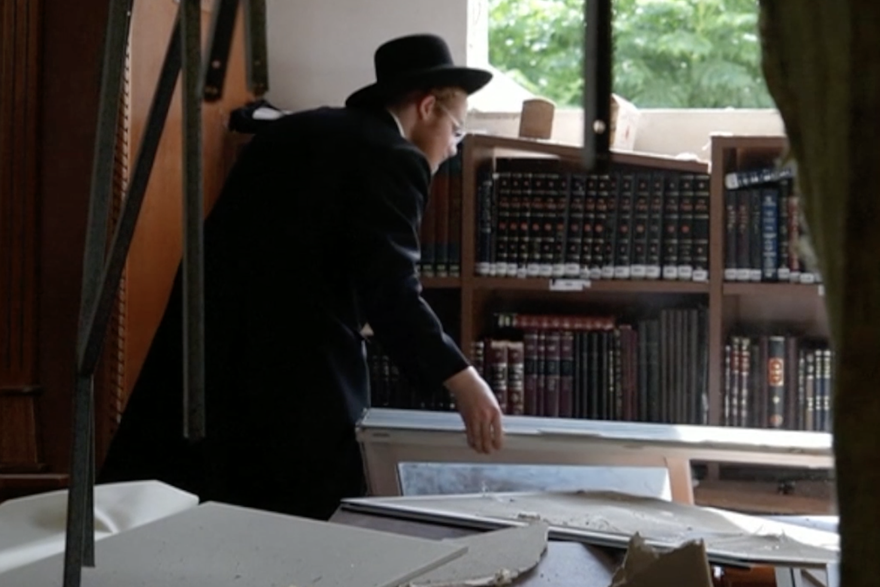Finally Lolita itself speaks
/s3/static.nrc.nl/images/gn4/stripped/data131448324-0b5de8.jpg|https://images.nrc.nl/khchAQS7B2mLV_igehExhclqrLc=/1920x/filters:no_upscale()/s3/static.nrc.nl/images/gn4/stripped/data131448324-0b5de8.jpg|https://images.nrc.nl/SINcxpzJnFn06l15WB0r78a9CjI=/5760x/filters:no_upscale()/s3/static.nrc.nl/images/gn4/stripped/data131448324-0b5de8.jpg)
Lolita. You know, that girl with heart -shaped sunglasses. That child who is soaked in a soaked, translucent dress, a magazine under the garden sprayer. Seventy years ago, in 1955, they were introduced to her for the first time, novel of the same name in Vladimir Nabokov’s, and since then she has been a household name. Whether you have read that book or not, you have heard of her, this young ‘Nimmijn’, the irresistible child woman, Achilles heel of every good man. At least, that’s how she is usually interpreted.
We almost only know her through other people’s interpretations. In his novel, Nabokov Humbert Humbert talks about her, a middle -aged man. Humbert describes how he rented a room from the widow Haze and her twelve -year -old daughter Dolores (Lolita is his pet name for her). He desires the girl and there is a sexual relationship between them. Subtle – too subtle for many readers – Nabokov makes it clear that Humbert is an unreliable narrator. He claims to be seduced by the girl, but nothing in her actions points to that. It is he himself who erosy her appearance.
Nabokov wanted to investigate how someone can lose themselves in such an erotic obsession that, in order to feed that obsession, he is willing to ignore all moral boundaries. Nabokov’s Humbert keeps himself in an exciting love story, while he is essentially the subject of a story about pedophilia, kidnapping and rape. How far can you include a reader in the self -justification of such a person, Nabokov was interested in that.
So far, apparently. Because it is hard enough for Humbert’s image of the child, and not the horrifying border crossings that he commits, which lasts with most readers. Lolita is defined in dictionaries as ‘a young, lustful girl’.
In the fantastic theater performance F*CK Lolita let director Silke van Kamp and writer Annet Bremen now speak this girl herself. Humbert is there, played by Joep van der Geest, but is silent. Lolita has previously outwished the direct object in the Dutch theater, for example in Lolita from Club Lam from 2021.
F*CK Lolita is a nuanced, sharp, powerful monologue, who is not only about the dynamics between Lolita and Humbert but, through them, about the ubiquitous sexualization of young girls (for example, the biographies of the actresses that Lolita played in the films); about how much people are willing to look away from sexual abuse; About the power of the person who gets the word; About how abuse victims are inclined to regard himself as instigator; About how trauma works; About the misconception that perpetrators would be ‘monsters’ – often they are shockingly normal, friendly people. For two hours exciting, highest urgent theater is.
Keja Klaasje Kwestro plays Lolita, and does it unparalleled. Somehow women’s roles in her interpretation are never apologetic, never infected by shame or spot, no matter how vulnerable or naive or eager or eager, they also put them down. Her Lolita is beautifully multi -sided. Alternately playful and bossy and witty and wonderful, she claims that space for herself.
She introduces you to the Kleine Dolores, raised by a mourning mother, who cannot hold her « because she thinks: if you hold something, it will die. » The child who nevertheless touches Humpert. The child who is turbulent curious about what that is like, tongues with boys. The child who parades on the street on the high heels of a girlfriend’s mother, hoping that a man will look at her.
And we see the adult version of her, the old woman who, after a long life drawn by self -forecast, now realizes that no childish craving or behavior may ever be a justification for child abuse. A woman who refuses even longer as other people guilty pleasure to act. Who returns the shame, similar to heroine Gisèle Pelicot, to the person who belongs to him.
Dolores Haze was not lusty. She was not Achilles heel. Perhaps it is time that we overwrite that image of her.
She was twelve.
Read also
This review of an essay bundle: « What does Lolita mean in our time? »

:format(webp)/s3/static.nrc.nl/bvhw/files/2021/11/data78480051-d0588c.jpg)
:format(webp)/s3/static.nrc.nl/wp-content/uploads/2024/12/27113911/web-2712ONDreconstructie1.jpg)
/s3/static.nrc.nl/images/gn4/data133757273-bdad3f.jpg)




